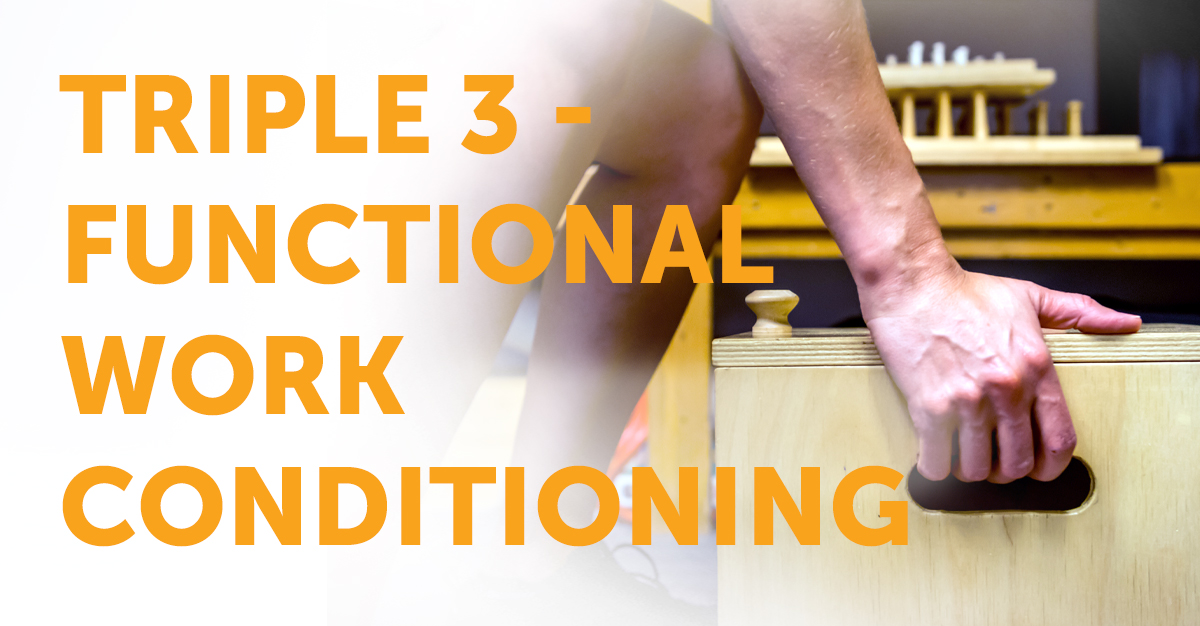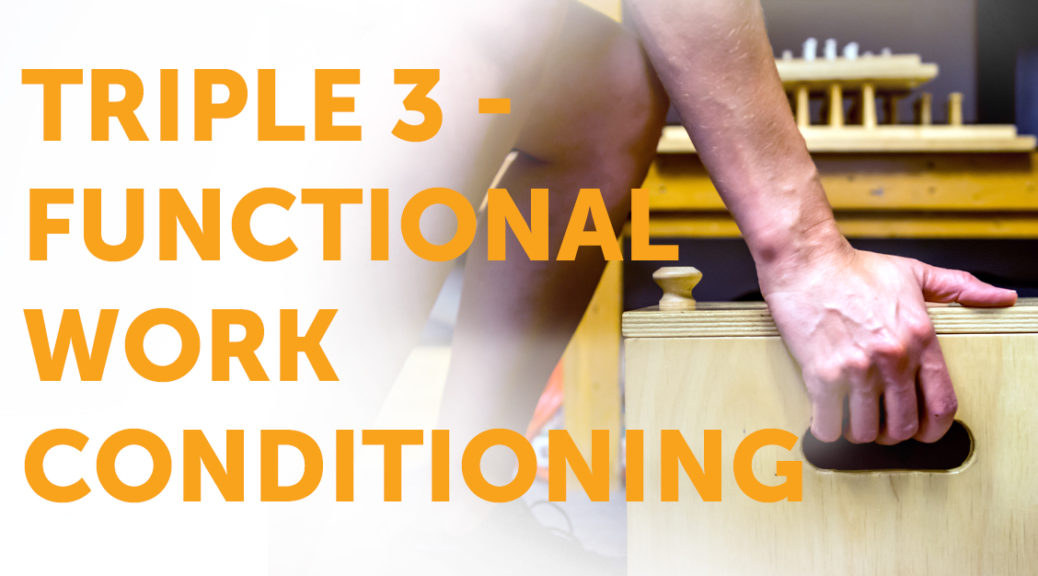
Functional Work Conditioning
Preparing workers for safe, sustained re-entry into the workforce.
Productive return-to-work strategies are needed to minimize the consequences of occupational injuries and illnesses. Here are the facts:
- Approximately 1/3 of all injuries in the United States are occupational in nature. 1
- In 2020, 2.7 million nonfatal workplace injuries and illnesses were reported, with nearly 43% resulting in lost work days (i.e., recuperation away from work or restricted duties at work). 2
- Focused inter-disciplinary rehabilitation programs have been shown to achieve return-to-work rates as has as 50-88%
- The longer patients are away from work, the less likely they are ever to return (50% of people who are out of work for six months never return). 4-6
Our Triple 3 Functional Work Conditioning Program
Work Conditioning is a “work-related, intensive, goal-oriented treatment program designed to restore an individual systemic, neuromusculoskeletal (strength, endurance, movement, flexibility, and motor control) and cardiopulmonary functions.” and is an integral part of our industrial rehabilitation physical therapy services.
Our functional work conditioning program is tailored to benefit everyone involved. We help patients recover and achieve functional goals, while congruently meeting the needs of employers, physicians, and case managers. We all know that once a patient has moved from an acute to a sub-acute phase the process of return to work begins. The job specific conditioning is instrumental in ensuring that a re-injury does not occur upon a too-early and unprepared entry back to work. An employer understands that this step is an integral and necessary component of the return-to-work process. By using the same therapy provider for acute and sub-acute therapy, you are assured that the client will be motivated and directed towards the best possible outcomes.
The Triple 3 program used by our physical therapy teams is a functional rehab model that takes place over three weeks with an opportunity for an extended three-week session depending upon outcomes.
Each week the patient will have three sessions lasting on average three hours and each session will be equally divided between cardio, job-specific, and injury-specific therapy. The initial eval will establish a baseline and an FCE can be performed at the end of the treatment program. Treatment involves exercises as well as functional tasks and activities. The work conditioning program aims to restore the injured employee’s physical capacity and function for return to work with an emphasis on the prevention of future injury by teaching correct body mechanics with safe movement patterns.

A functional capacity evaluation post the Triple 3 program may be available to quantify functional abilities prior to return-to-work-related duties. Our goal is to provide a motivated and confident employee back to work safely and functionally sustainable.
The Results of a Functional Work Conditioning Program:
A confident and capable employee ready to undergo the essential and critical demands of the job without concern for safety or re-injury. An employee that is functionally ready to participate in the field of work is our end goal.

References:
1. Rubens AJ, Oleckno WA, Papaeliou L. Establishing guidelines for the identification of occupational injuries: a systematic appraisal. J Occup Environ Med. 1995;37:151-9.
2. United States Department of Labor, Bureau of Labor Statistics. Employer-Reported Workplace Injuries and Illnesses, 2020. https://www.bls.gov/news.release/osh.nr0.htm
3. National Safety Council. Accident facts. Itasca, Ill.: National Safety Council, 1997.
4. Bendix AF, Bendix T, Ostenfeld S, Bush E, Andersen null. Active treatment programs for patients with chronic low back pain: a prospective, randomized, observer-blinded study. Eur Spine J. 1995;4:148-52.
5. Cleary L, Thombs DL, Daniel EL, Zimmerli WH. Occupational low back disability: effective strategies for reducing lost work time. AAOHN J. 1995;43:87-94.
6. Niemeyer LO, Jacobs K, Reynolds-Lynch K, Betten-court C, Lang S. Work hardening: past, present, and future—the work programs special interest section national work-hardening outcome study. Am J Occup Ther. 1994;48:327-39


